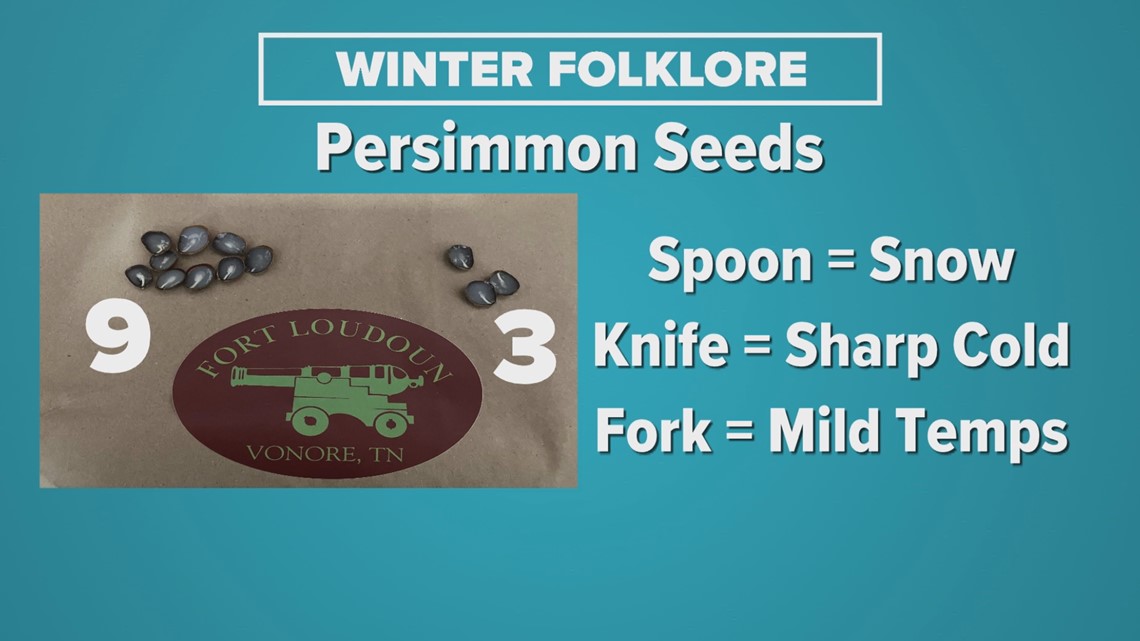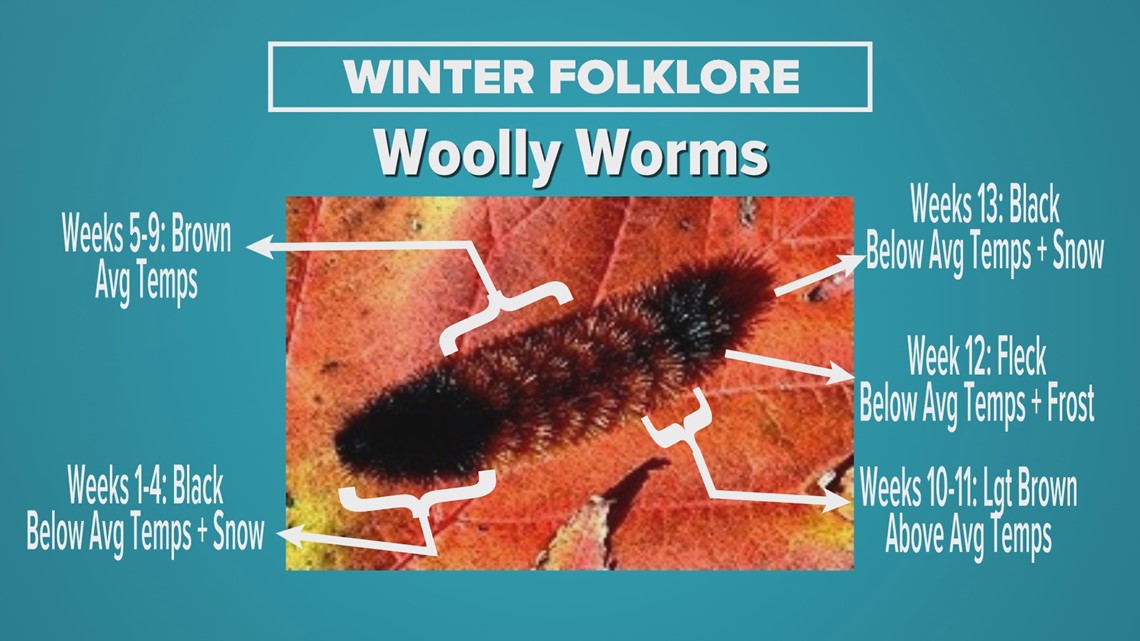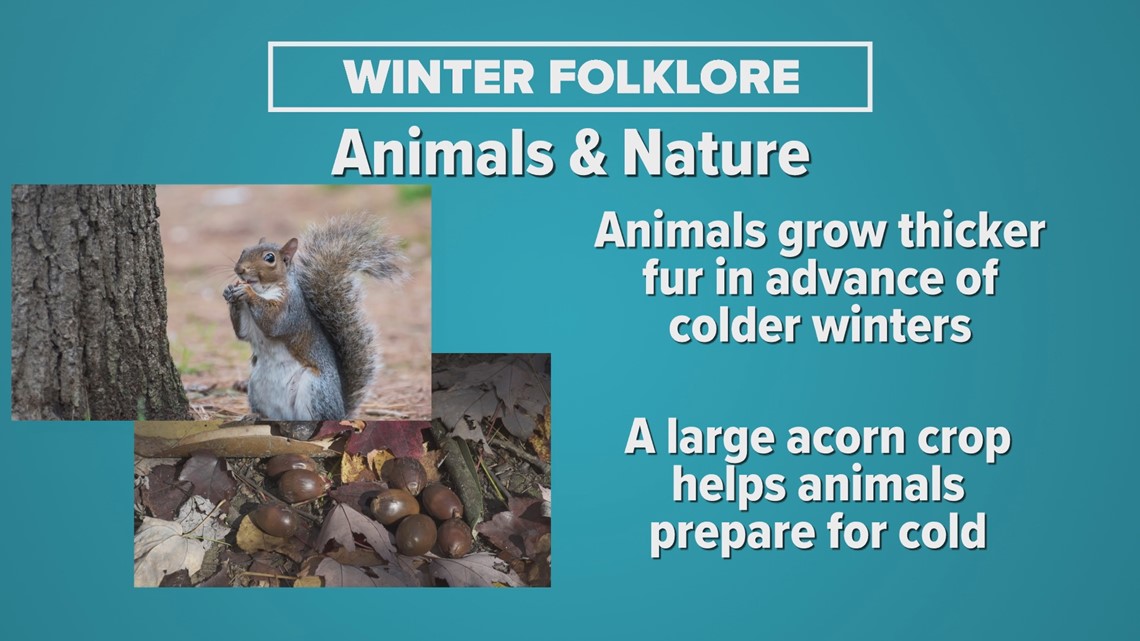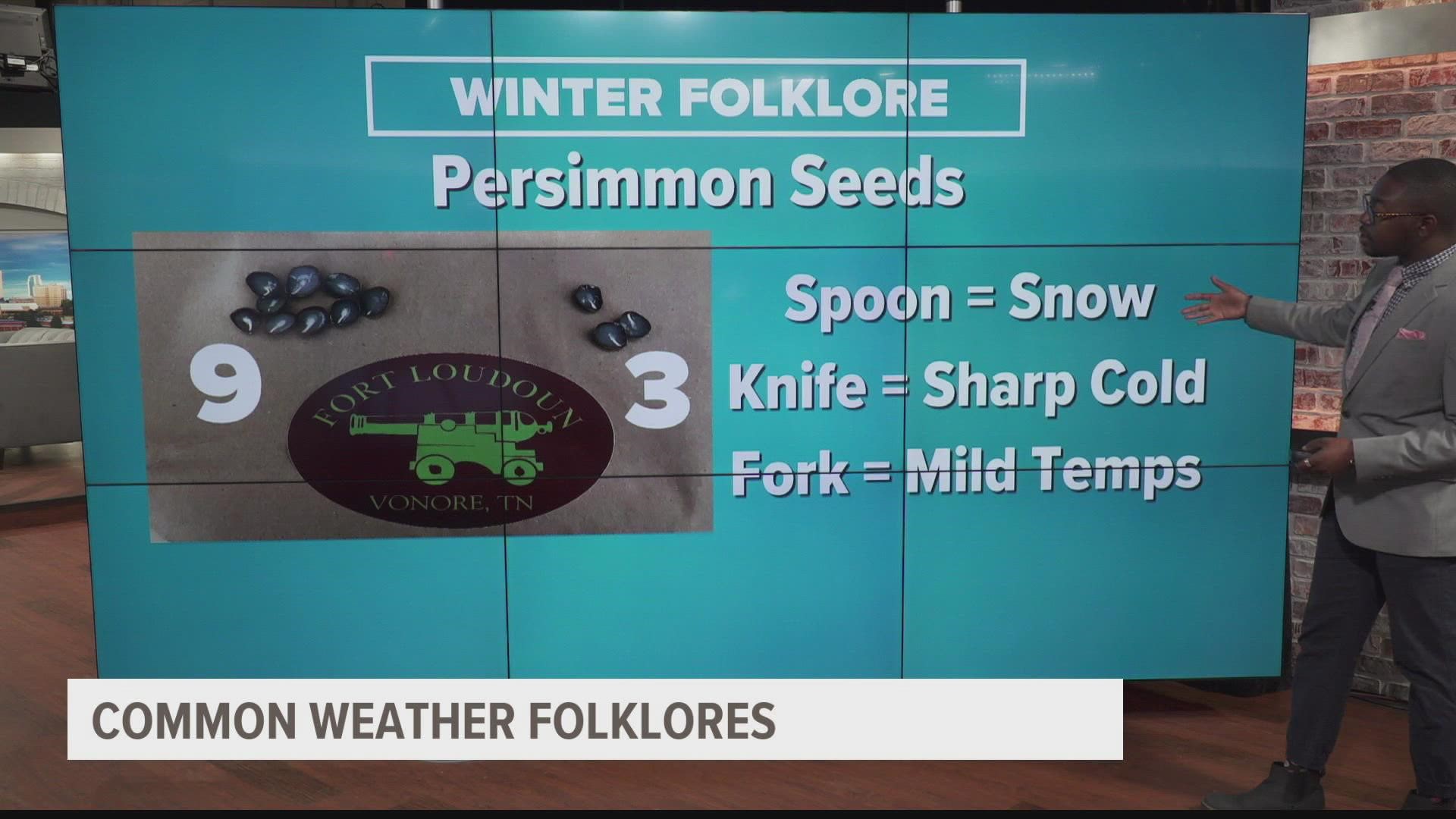KNOXVILLE, Tenn. — Fall is the time of year when people look for signs to predict the winter to come. If you're not a fan of supercomputers calculating long-range winter weather trends and models, then why not turn to some fuzzy worms and persimmon seeds?
People in East Tennessee love turning to folklore to figure out their winter bread and milk budget.
It turns out there used to be a lot of detail that went into “forecasting” the weather before we had our models. The sky, the flora and the fauna all contained hints as to what kind of winter was coming.
For East Tennessee, one of the most popular predictors was persimmon seeds. People would cut into a handful of seeds and look at the shapes inside. Lots of spoon shapes meant a snowy winter full of shoveling, knife shapes meant a winter full of sharply cold days, and fork shapes meant mild temperatures.
Fort Loudoun State Historic Park in Vonore cuts open a handful of seeds each year, and if you're going off the park's seeds: You will want to buy a snowblower. Nine of the seeds had spoons inside of them and the other three had knives.


If you don't trust persimmon seeds, then woolly worms are another popular predictor for Appalachia. Woolly worms attempt to give a more detailed forecast by counting the colors on each of its 13 sections -- 1 for each week of winter.
Each year, the town of Banner Elk in North Carolina holds a festival for woolly worms that culminates in a race between a few fuzzy contestants. The winning worm's sections are then 'read,' and this year's winning worm showed a varied winter, starting strong with below-average temperatures and snow, a break halfway through the season, then wrapping up with more cold temps and snow.


If you are hoping to do some predicting of your own, then keep an eye on the animals around you when you are outside. All animals – wild, farm or pets – will grow thicker fur ahead of tough winters, and you might catch them gathering extra food, too. Be wary of rodents and spiders trying to enter your home to escape the cold!


Finally, if you want to get a little more "scientific" by using the weather to predict the weather, then many people claim the number of fogs in August can predict snow events over the winter. August 2022 had nine true fogs, meaning nine possible snow events. It's not defined well how much snow each occasion could bring, but that’s another indicator of a possible blistery winter.


Even though it's a lot of fun to talk about -- and we certainly do need to stay connected to nature -- we'll continue to stick with modern technology to help us with our forecasting!

